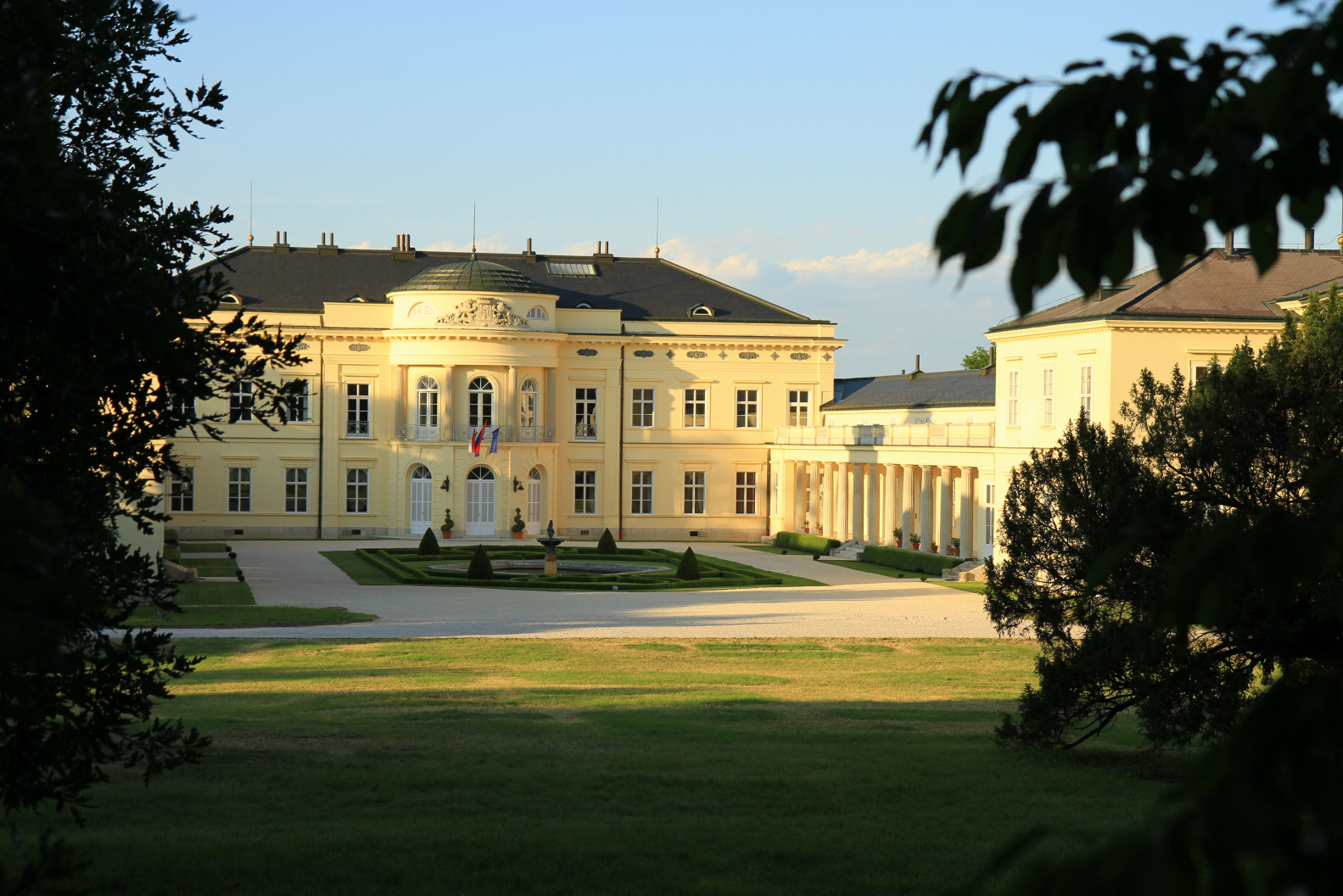
The stately home was built between 1844 and 1850 by Count George Károlyi (1802-1877) in neo-classical style. The architect was the Austrian Heinrich Koch, assisted by the Young Miklós Ybl, who later became one of hungary's great architects of the century. It underwent a major refurbishing in the 1910 years, when George,'s grandson, Count Joseph Károlyi (1884-1934), inherited it and wanted to make it more suitable to the "modern life" of that time.
In 1945 the stately home is nationalized together with the whole estate, and the Károlyi family emigrates in France. After having escaped major damage from war operations, the place is occupied for some months by the Hungarian People's Army, then assigned to the National gas Company who began to convert it into a holiday place for its employees. In 1949 however, further to the end of the Greek civil war, the Hungarian government decides to re-assign the stately home as a home for the Greek children kidnapped by the communist partisans. In 1955, the Greek children's home is closed and the stately home is converted into an orphanage for Hungarian abandoned children. Neither of these institutions cared to perform on the building the minimum necessary maintenance Works, in consequence of what the orphanage had to close in turn and leave the place in 1979.
Between 1979 and the Nineties, the stately home was kept closed and totally abandoned. It was during these years that it is suffered major damage, with the Wood fungus appearing and attacking the main structures.
When we first started (around 1992-1993) to think of doing something in Fehérvárcsurgó, the legal situation was as follows: the owner was the Hungarian State (represented by the treasury), the "administrator" was an other governmental body, the State Agency for Historic Monuments (MAG) and the National Board for Historic Monuments was responsible for authorizing the new function and the related restoration Works to be performed.
We first defined the new function we wanted to be inserted in the stately home: the European Cultural Meeting Centre, focused on the opening of Hungary to Europe, and had this project approved by the above-mentioned bodies as perfectly suitable for the place.
We then created (in 1994) the legal vehicle of the project: the Joseph Károlyi Foundation, which signed in 1997 a "co-operation and partnership agreement" with the MAG, under which both partners would join their efforts to restore the stately home and install in it the activities of the European Cultrual Meeting Centre.
The Foundation was considered an improper vehicle to cope with such an "investment-like" activity and this is why we created in 2000 a company by shares, the Fehérvárcsurgó Károlyi-Castle Renovating and Operating Company Ltd. (FKKF Zrt.).
In 2001 the FKKF Zrt. took over officially from the MAg the right of use of the castle for 99 years, on condition that the restoration is achieved within 10 years.
From 2009 the European Union's Structural Funds became available also in Hungary, and our Foundation made an application which was successful and led to the awarding of a 1 700 000 euro grant, thanks to which the restoration could be terminated within the deadline agreed. This last stage of the renovation led to the availability of 2 500 sq. meters additional facilities, huge reception rooms, big oval libraray, conference rooms, ballroom, music room etc. that now enables the Foundation to develop its activities on a much larger scale.
The restoration was completed in 2011. Since 2013 a Hotel and Restaurant also welcomes the guests.
The stately home is visited by more than 20 000 people on a yearly basis. The currentdevelopments allow us to forecast a clear increase of this figure in the near future, together with limitless new activities and programs on which we are working.